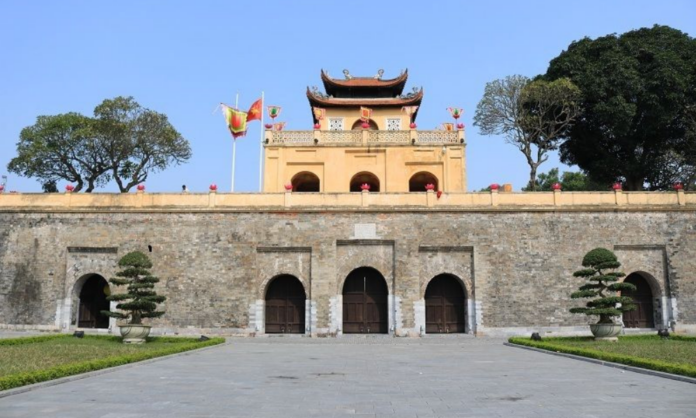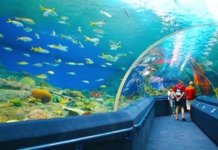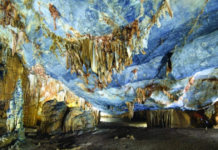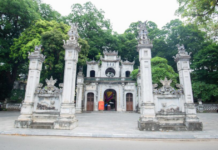Located in the heart of Hanoi, the Imperial Citadel of Thang Long is not only a valuable cultural heritage but also a symbol of Vietnam’s history. With a history spanning thousands of years, it marks the presence of many dynasties and significant historical events. From its unique architecture to its archaeological relics, the Imperial Citadel of Thang Long is a fascinating destination, offering a deep insight into the culture and national identity of Vietnam.
1. Introduction to the Imperial Citadel of Thang Long
The Imperial Citadel of Thang Long, a prominent historical site, is closely linked to the formation and development of the Thang Long citadel, which was built in the 7th century and extended through the Dynasties of Dinh and Pre-Le. In 1010, under the Ly Dynasty, the capital was officially moved from Dai La to Thang Long, marking a significant turning point in history.
Throughout the Ly, Tran, Le, and Nguyen Dynasties, this place was not only the political center but also a witness to many national independence struggles. The Citadel not only reflects cultural development but also serves as proof of the continuation of traditions across historical periods.
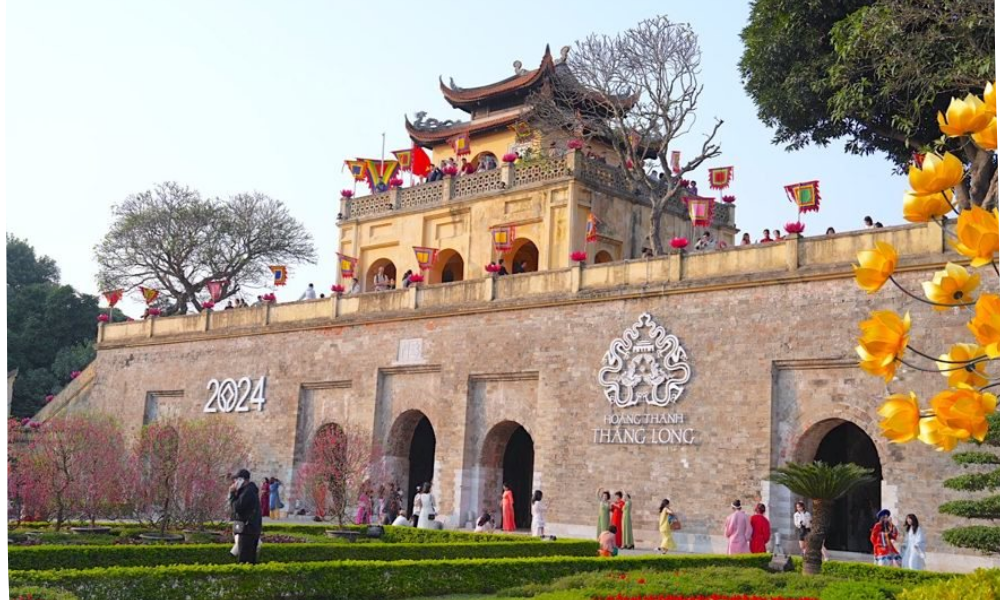
On July 31, 2010, in Brazil, the World Heritage Committee recognized the Imperial Citadel of Thang Long as a World Cultural Heritage, marking pride not only for Hanoi but also for the entire Vietnamese nation.
Today, with its unique architecture and special historical value, the Imperial Citadel of Thang Long has become an attractive destination for tourists. Here, visitors have the opportunity to admire the remaining relics and gain a deep understanding of the history and culture of past generations.
2. Location of the Imperial Citadel of Thang Long
The Imperial Citadel of Thang Long is located at 19C Hoang Dieu, Dien Bien Ward, Ba Dinh District, Hanoi. This historical complex spans over 18,000 square meters and is surrounded by major roads as follows:
- East: Borders with Nguyen Tri Phuong Street
- West: Bordered by Hoang Dieu Street, Doc Lap Street, and the Ba Dinh Hall area
- North: Facing Hoang Van Thu Street and Phan Dinh Phung Street
- Southwest: Ends at Dien Bien Phu Street
3. Opening hours and entrance fees
Opening hours: 8:00 AM – 5:00 PM
Ticket price: 70,000 VND per person. However, the ticket is free for people with severe disabilities as per Article 11, Clause 1 of Decree No. 28/2012/ND-CP of the government, and for children under 16 years old (It is advised to bring a birth certificate or student ID as proof; if unavailable, the policy applies to children under 1.3 meters). Entrance tickets are discounted by 50% for the following groups: Vietnamese citizens aged 60 and above, people with severe disabilities, and students over 16 years old with valid student IDs issued by institutions under Vietnam’s national education system.
>> Explore the Imperial City of Hue: The timeless beauty of the ancient capital citadel
4. Attractions at the Imperial Citadel of Thang Long
4.1. Admire the Hanoi Flag Tower
The Hanoi Flag Tower, also known as Kỳ Đài Hanoi, is a historically significant structure built in the 19th century on the grounds of the Tam Mon Citadel during the Le Dynasty, part of the Imperial Citadel of Thang Long complex. This is one of the must-see destinations in the Thang Long archaeological site tours.
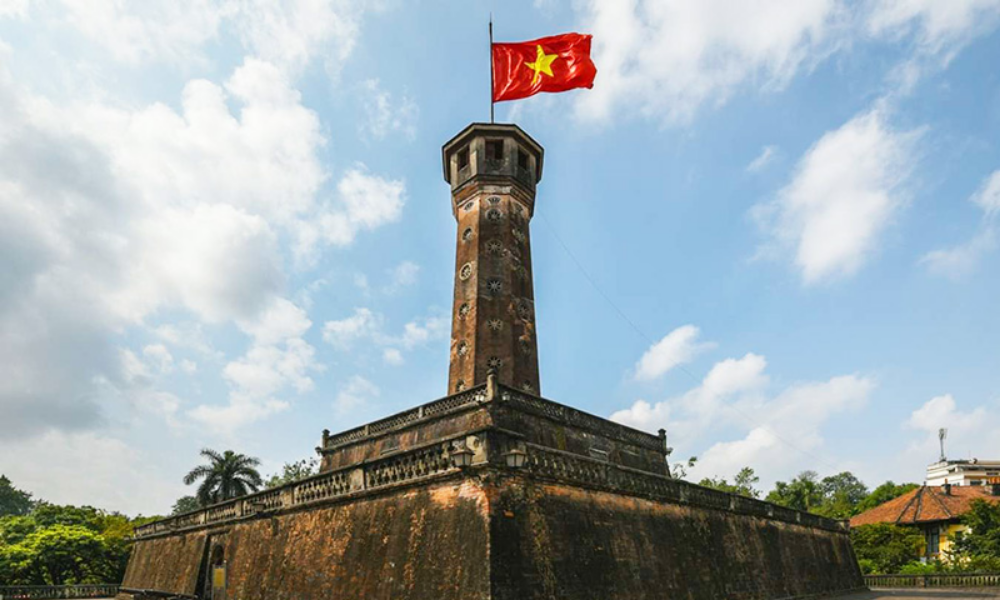
The Flag Tower stands 60 meters tall, featuring three gradually tapering levels, each decorated with intricate patterns. The red and yellow flag waving in the sky symbolizes not only the millennium-old history of the capital but also the pride of the Vietnamese nation. Address: 28A Dien Bien Phu, Dien Ban Ward, Ba Dinh District, Hanoi
4.2. North Gate
The North Gate is one of the five main gates built during the Nguyen Dynasty, carrying deep historical significance. On its surface, visitors can easily spot two cannonball marks left from the colonial period, representing the turmoil caused by the French colonists. This location is also dedicated to the commemoration of two Hanoi governors, Hoang Dieu and Nguyen Tri Phuong. When exploring the Imperial Citadel of Thang Long, the North Gate is an unmissable stop that offers a deeper understanding of the history and culture of this region.
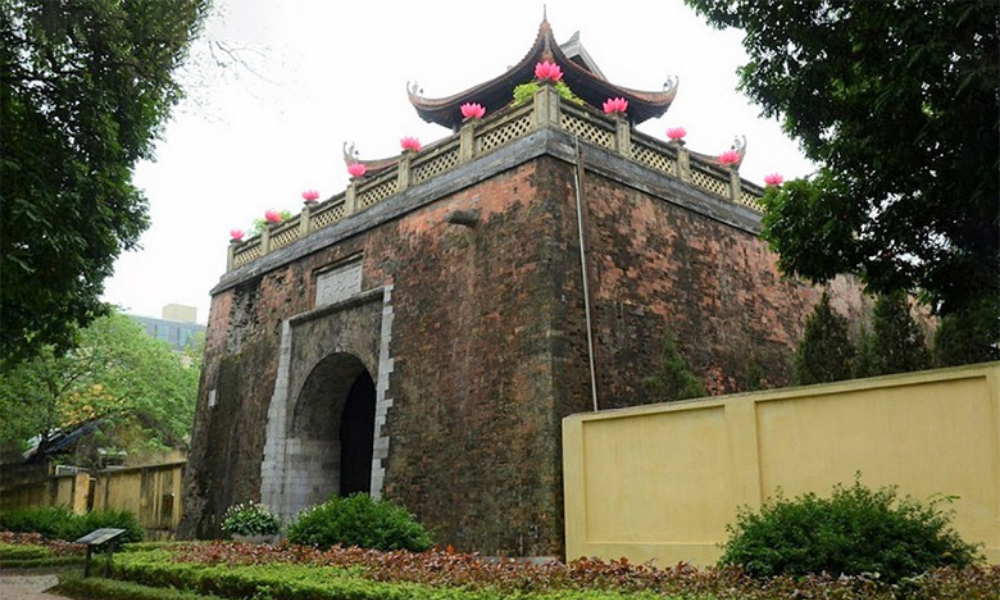
4.3. Explore the Archaeological Site
In 2002, a large-scale excavation uncovered the Hoang Dieu Archaeological Site, one of the important discoveries in the cultural heritage of the Imperial Citadel of Thang Long. What makes this archaeological site unique is the continuous overlap of ancient structures and relics, representing various historical periods from Dai La, Dinh – Pre-Le, Ly, Tran, Ho to Nguyen. With its well-preserved layers from each historical period, this site is one of the few relics that comprehensively retain ancient layers. Visitors to the Imperial Citadel of Thang Long should not miss the chance to explore this unique archaeological site.
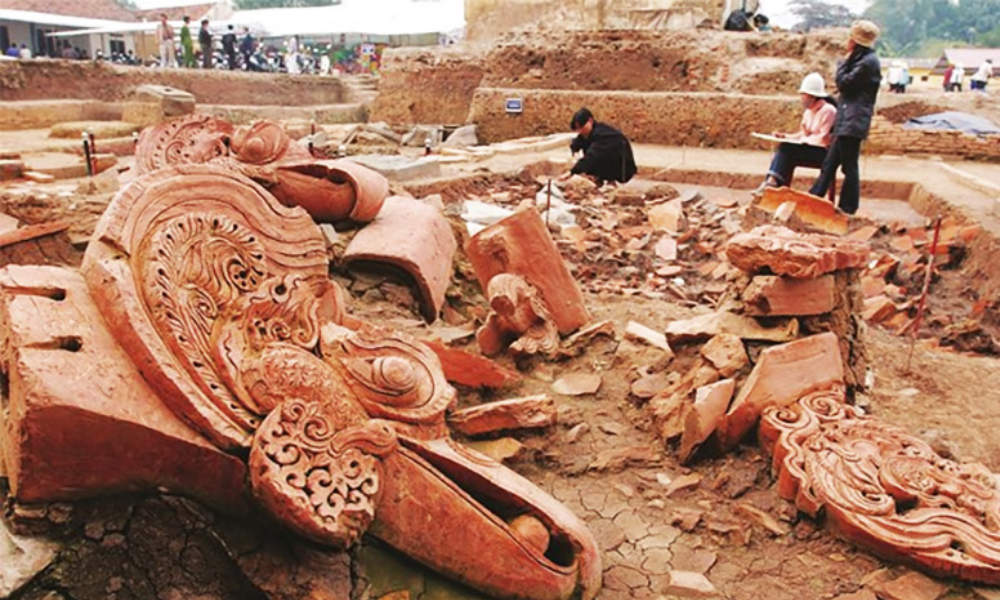
4.4. Kinh Thien Palace
Kinh Thien Palace, located in the central position of the Imperial Citadel of Thang Long, was one of the most important buildings in its history. Despite having undergone many changes and now only having a few remnants, the foundation of the palace and the two pairs of intricate dragon carvings still evoke the magnificence and majesty of Kinh Thien Palace in the past. These traces not only reflect artistic value but also serve as evidence of a golden era of the Thang Long citadel.
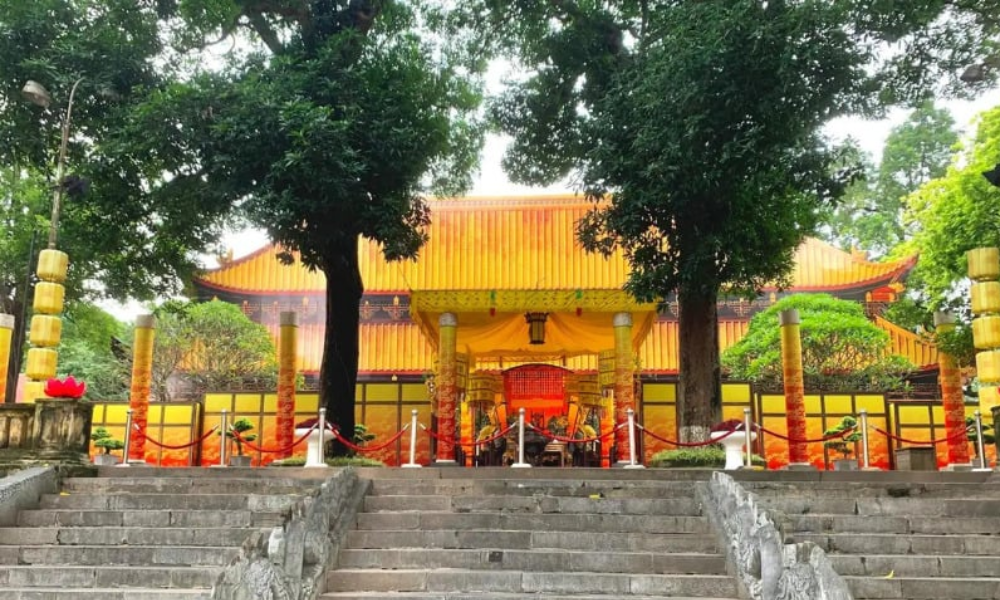
4.5. Doan Mon
Doan Mon, the innermost gate leading into the Forbidden City area, has remained almost completely intact over the centuries. Built from stone, the structure has a U-shape design with five arches, with the two side passages designated for the royal family and court officials, while the central passage is reserved for the king. On top of the gate is a watchtower, where guards were stationed for protection. Today, Doan Mon is not only a historical symbol but also a popular destination for visitors, where they can capture memorable moments while exploring the Imperial Citadel of Thang Long.
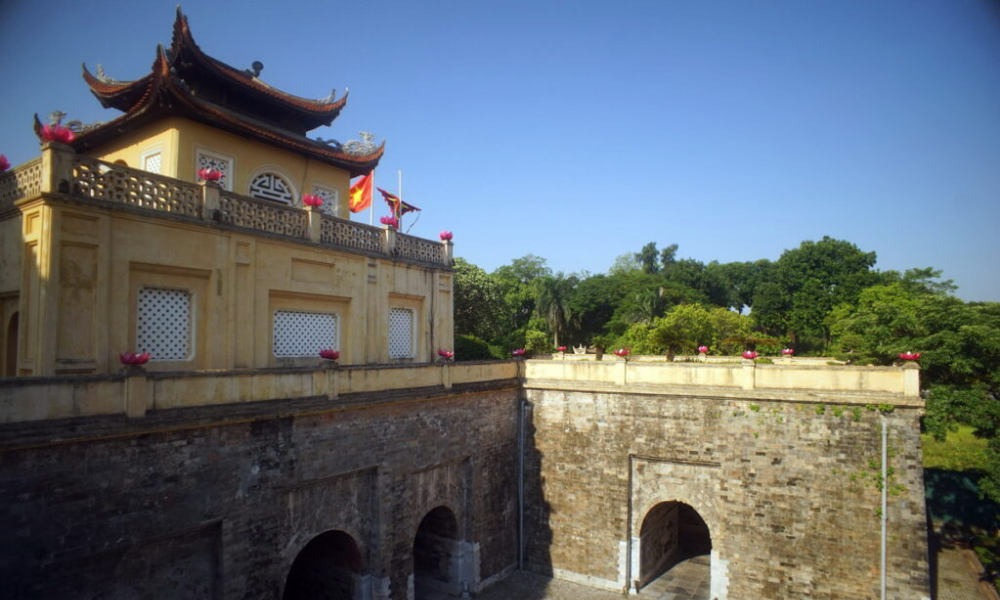
4.6. Hau Lau
Hau Lau, also known as Tinh Bac Lau, is an important pavilion located behind the Kinh Thien Palace complex within the Imperial Citadel of Thang Long. Built to protect the northern side of the old Hanoi imperial palace, Hau Lau was once the residence of queens and princesses during the feudal period. This site holds historical value and is also an integral part of the cultural heritage of the ancient dynasty.
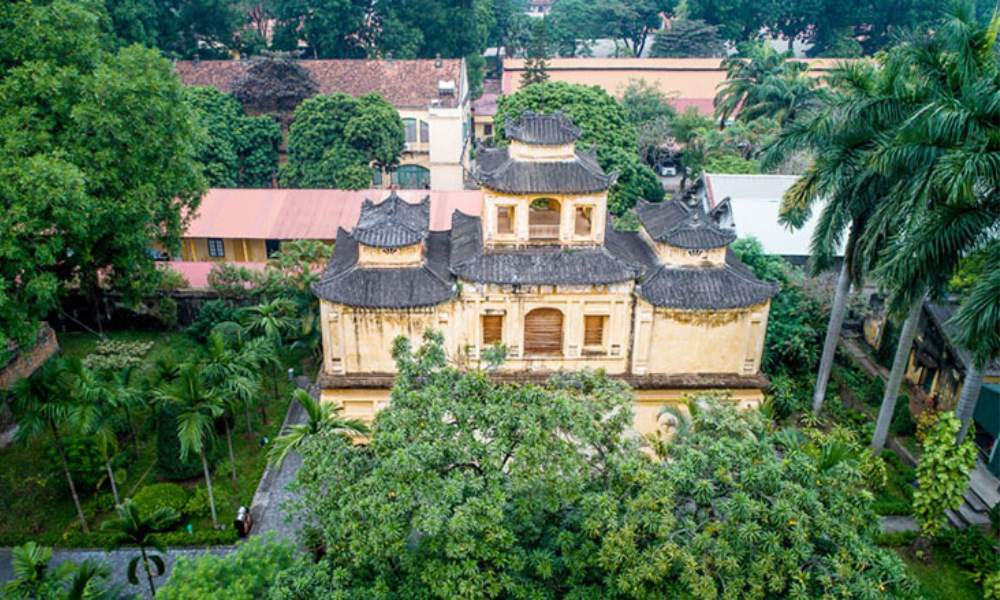
4.7. D67 Revolutionary House
Built in 1967, the D67 house within the Imperial Citadel of Thang Long is considered the youngest structure within this historical complex. It was once the workplace of legendary military leaders such as General Vo Nguyen Giap and General Van Tien Dung. Visitors to D67 will have the opportunity to view familiar items like maps, furniture, and telephones, which serve as reminders of a heroic period in Vietnam’s struggle for independence.
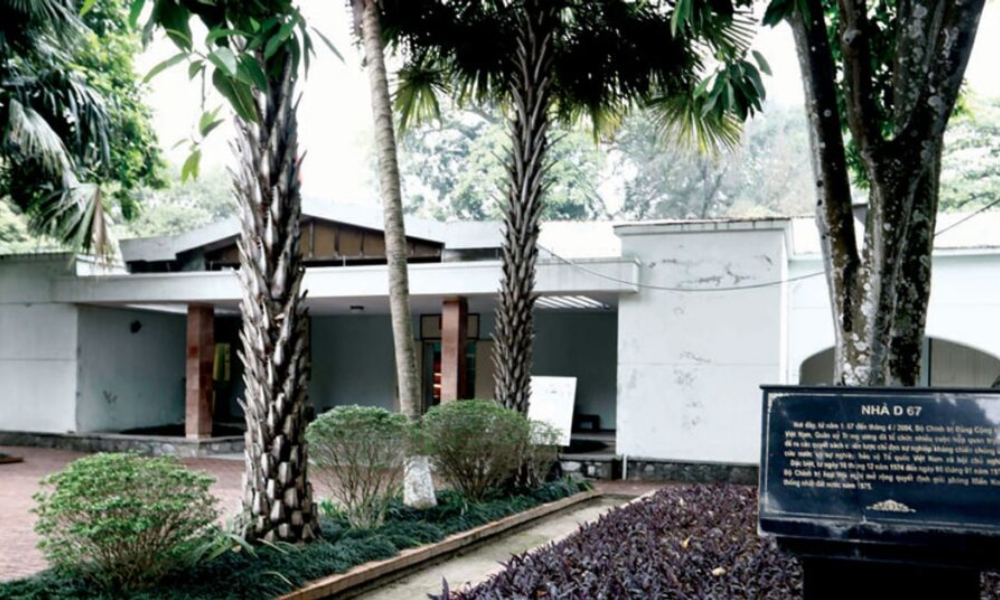
5. Tours of the Imperial Citadel of Thang Long
5.1. Night tour of the Imperial Citadel of Thang Long
Opening hours: 7:00 PM on Fridays and Saturdays
Ticket prices: 300,000 VND for adults; 150,000 VND for children under 12 years old; free for children under 5 years old.
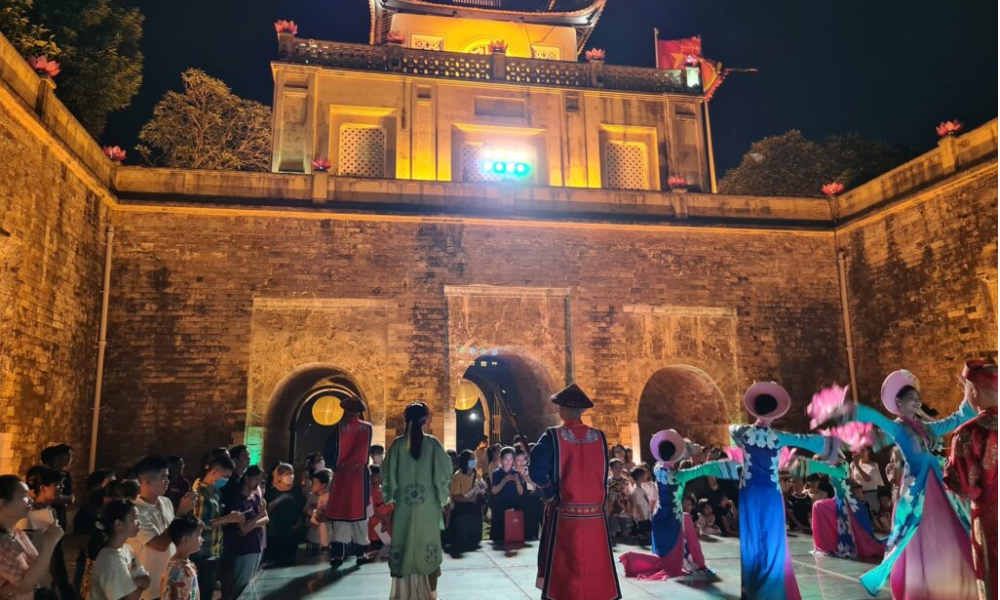
On this tour, visitors will have the chance to admire prominent architectural structures such as Doan Mon gate, Kinh Thien Palace, and the inner royal quarters. Additionally, they can enjoy the art display on the archaeological glass floor at Doan Mon, participate in incense offerings to honor the previous emperors at Kinh Thien Palace, and explore the archaeological site with valuable relics unearthed from the ground. An exciting highlight is the “Decode the Imperial Citadel” game, where visitors can enjoy a stunning laser show. At the end of the tour, guests can relax with lotus jam and lotus tea under the shade of an ancient banyan tree, experiencing tranquility in the historical space.
5.2. Domestic visitors tour
For a deeper insight into the Imperial Citadel of Thang Long heritage, domestic tourists can join a special exploration tour. This program offers a range of engaging activities, including:
- Watching a film about the historical development of the Imperial Citadel through various periods.
- Visiting key landmarks such as Kinh Thien Palace, Doan Mon gate, the exhibit area, and Hau Lau, with detailed commentary from a tour guide.
- Releasing birds as a wish for peace and well-being.
- Exploring the archaeological site and experiencing the well water from the ancient royal palace.
- Participating in incense offering ceremonies at Kinh Thien Palace.
- An opportunity to purchase unique souvenirs to remember the visit.
5.3. International visitors tour
International tourists who sign up for the Imperial Citadel of Thang Long heritage tour will have the opportunity to experience a variety of exciting activities, including:
- Watching a film that provides an overview of the Imperial Citadel – Hanoi – Vietnam, presented in English with Vietnamese subtitles.
- Visiting notable relics such as Doan Mon gate, Hau Lau, Kinh Thien Palace, and hearing detailed explanations about the history and architecture of each site.
- Participating in a photo booth and trying on traditional royal palace costumes.
- Enjoying performances of folk art and unique water puppetry.
- Exploring the archaeological site at Hoang Dieu 18, along with the experience of ancient royal well water.
- Visiting the “Vietnamese Cultural Features” souvenir stalls to learn more about the national cultural identity.
>> Hoan Kiem Lake Pedestrian Street – A romantic beauty in the heart of the capital
6. Important notes for visiting the Imperial Citadel of Thang Long
To ensure safety and protect the heritage during your visit to the Imperial Citadel of Thang Long, tourists need to adhere to several important rules as follows:
- Follow the available guide maps within the site for a smooth visiting experience.
- Do not bring flammable, explosive materials, weapons, or substances with foul or harmful odors into the site.
- Dress modestly and respectfully, and maintain decorum by refraining from using vulgar language.
- Be conscious of preserving cultural relics and maintaining cleanliness in the surroundings.
- For personal vehicles, visitors are required to park in the designated areas.
- If you need a guide, please contact the tour guide department. For filming or video recording activities, tourists must have an introduction letter and obtain approval from the leadership of the Thang Long-Hanoi Heritage Conservation Center.
- Note that the use of drones for filming or photography is not permitted at the heritage site. These regulations not only help preserve the cultural and historical value of the heritage but also ensure a safe and enjoyable experience for all visitors.
>> Hon Chong – The pristine beauty and wonders of nature
7. Nearby attractions to the Imperial Citadel of Thang Long
- One Pillar Pagoda, located at the park behind Ong Ich Kiem Street, next to the Ba Dinh Square and Ho Chi Minh Mausoleum.
- Ho Chi Minh Mausoleum, located at 1 Hung Vuong, Dien Bien, Ba Dinh, Hanoi.
- Quan Thanh Temple, located at Thanh Nien Road, Quan Thanh, Ba Dinh, Hanoi.
- Hang Dau Post, located at Nguyen Trung Truc, Ba Dinh, Hanoi.
- Botanical Garden, located at 1B Hoang Hoa Tham Street, Ngoc Ho, Ba Dinh, Hanoi.
- Hoa Lo Prison, located at 1 Hoa Lo Street, Tran Hung Dao, Hoan Kiem, Hanoi.
- Hoan Kiem Lake, located at 1-8 Le Thai To Street, Hang Trong, Hoan Kiem, Hanoi.
Follow MyHuy Global to stay updated with exciting travel experiences!


